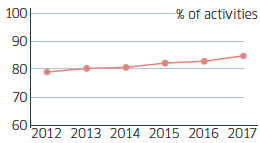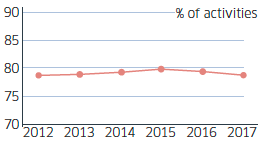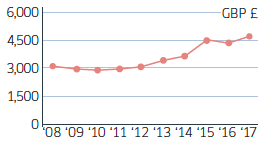Tackling inequality: guidance on making budget decisions
Informal guidance for policy makers on equality and human rights budgeting. The booklet challenges policy makers to systematically think through 6 key questions to identify ways in which budget decisions could be improved to advance human rights and address inequalities. Budget decisions include both those made about the money we spend and decisions about how revenue is raised.
Question 6 How will the impact of the budget decisions be evaluated?
Once the intended outcomes for a given budget are agreed upon, it is important to decide how progress towards achieving these can be measured and evaluated in the medium and long term. Without this information it is impossible to understand the effectiveness of particular spending decisions and the extent to which they offer value for money, achieve their intended purpose and serve to reduce inequalities.
There are various approaches to using evidence to understand the impact of spend on inequality. For example this might be through the use of indicators including the various equality, income and place breakdowns of the indicators, such as those used in the NPF. Or it can be done through more detailed measurement frameworks for example those on housing, minimum alcohol pricing or child poverty.
Indicators can be monitored to help understand if the money being spent is having the desired impact – if it is making a difference. In reporting on progress towards outcomes, the actual spend for each part of the budget should be stated (alongside how much was originally allocated) and together, indicators can show whether the outcomes have been met.
Alternatively, it might involve commissioning a formal evaluation of the policy. It is important to consider approaches to monitoring and evaluation as part of the initial budget decision.
The results of your evaluation will in turn supplement or update your existing evidence base and help you make future policy and budget decisions.
“As a Government we need to ensure that we are open and transparent in the way in which we use evidence to understand the impact of our spend; we need to ensure that we are channelling funding into those areas which have the greatest impact on improving societal wellbeing.”
Professor Carol Tannahill
Chief Social Policy Advisor, Scottish Government
Example:
Outcome
We are creative and our vibrant and diverse cultures are expressed and enjoyed widely

Indicators
National Outcome: Culture
National Indicators
- Attendance at cultural events or places of culture
- Participation in a cultural activity
- Growth in cultural economy
- People working in arts and culture
Sustainable Development Goals
- SDG 5: Gender equality
- SDG 10: Reduced inequalities
- SDG 11: Sustainable cities and communities

Indicator results
Culture
Attendance at cultural events or places of culture
Percentage of adults who have attended or visited a cultural event or place in the last 12 months
Performance Improving

| Year | Figure |
|---|---|
| 2013 | 80.4 |
| 2014 | 80.3 |
| 2015 | 82.4 |
| 2016 | 83.1 |
| 2017 | 84.5 |
Participation in a cultural activity
Percentage of adults who have participated in a cultural activity in the last 12 months
Performance Maintaining

| Year | Figure |
|---|---|
| 2013 | 78.3 |
| 2014 | 78.6 |
| 2015 | 79.0 |
| 2016 | 78.8 |
| 2017 | 78.1 |
Growth in the cultural economy
The amount of income generated by business, measured by Approximate Gross Value Added (aGVA), of the Creative Industries Growth Sector (GBP Millions)
Performance Improving

| Year | Figure |
|---|---|
| 2012 | 2,990 |
| 2013 | 3,604 |
| 2014 | 3,757 |
| 2015 | 4,695 |
| 2016 | 4,419 |
| 2017 | 4,910 |

Indicator results broken down (by area deprivation)
National Indicator: Participation in a cultural activity
The percentage of adults who have participated in a cultural activity in the last 12 months, overall average and by Scottish Index of Multiple Deprivation

This chart, for example, shows that while overall participation in a cultural activity remained fairly constant between 2012 and 2017, participation rates in the lowest and highest SIMD quintiles actually diverged over the same period. New policy action could aim to address this inequality.
Source: Scottish Household Survey
Contact
Email: Gillian.Achurch@gov.scot
There is a problem
Thanks for your feedback